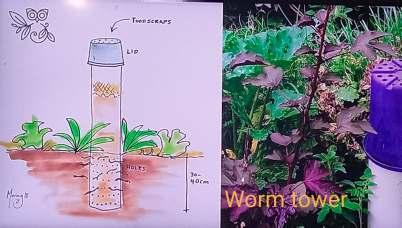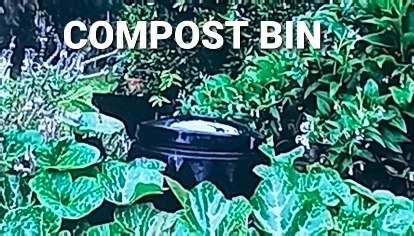I have reached an age where l like to make things easy for myself and composting in-situ has been fantastic on/in my clay soil.
Two of my favourite methods are:
- Digging holes or trenches where new beds are to go or creating new raised beds for use in the future and filling with the usual composting materials then covering with a thick layer of straw, leaves or a mixture of mulches and allowing to break down ahead of the growing season. Keep moist and worms are a great addition.
- Also, placing a compost bin over the new bed position or on top of one which needs to be fed/replenished and when composted down, remove bin and scatter compost evenly
Both these methods saves backbreaking turning and wheel barrowing soil to new beds. I have 60ltr bins with lids everywhere I regularly prune and now have a constant supply of compost with no effort. 30% green and 60% brown is a good mix.
 WORM TOWERS are effective in feeding perenn ial gardens and can be left permanently in the ground. Place PVC pipe with holes drilled in the underground section to enable worms (approx 30 to 40cm deep) and your desired height above ground then cover with a garden pot (see pic). Start filling with kitchen scraps, shredded paper, etc and compost worms are essential.
WORM TOWERS are effective in feeding perenn ial gardens and can be left permanently in the ground. Place PVC pipe with holes drilled in the underground section to enable worms (approx 30 to 40cm deep) and your desired height above ground then cover with a garden pot (see pic). Start filling with kitchen scraps, shredded paper, etc and compost worms are essential.- CHOP and DROP for new or existing beds. Just chop anything that will break down easily and drop on top of soil around plants such as comfrey, moringa, spent pumpkin vines, arrowroot, pigeon peas, etc.
- COVER CROPS. Plant crops like mustard, clover, daikon radish, buckwheat, broadbeans in fallow beds and, before they fully flower and seed, chop and drop or plough into the bed ready for new season crops.
All these methods start creating the microbiome whilst composting in the exact position it's required and require little effort compared to traditional compost bins.
If you need further information, please don’t hesitate to ask me at a meeting.
Thank you
Happy gardening

